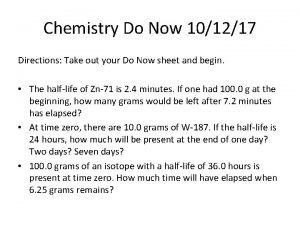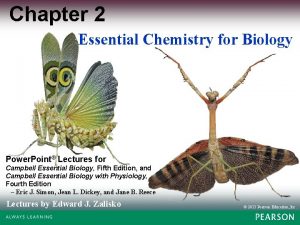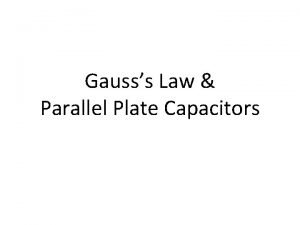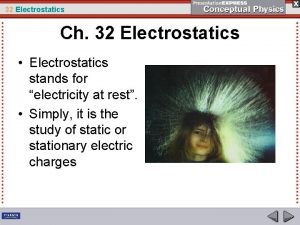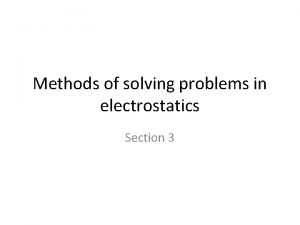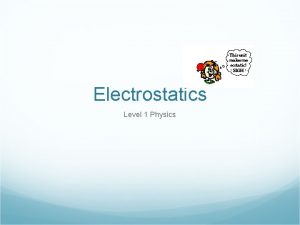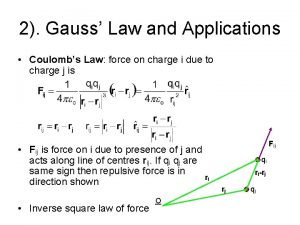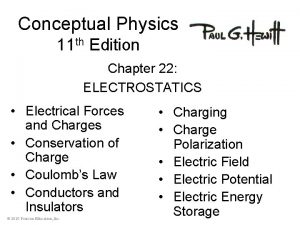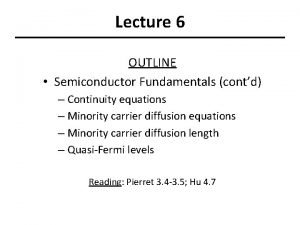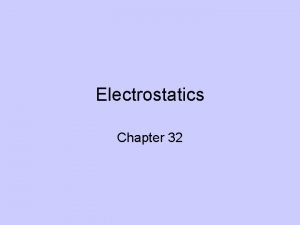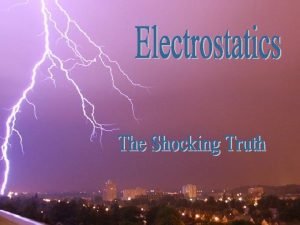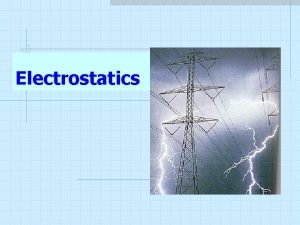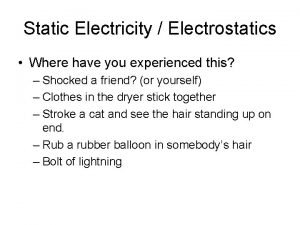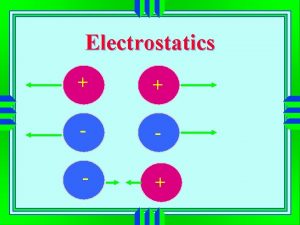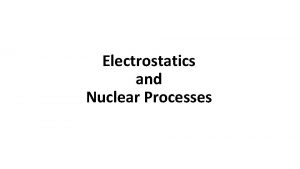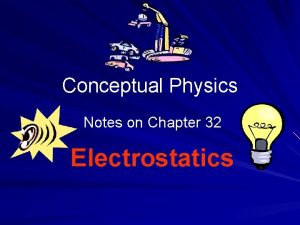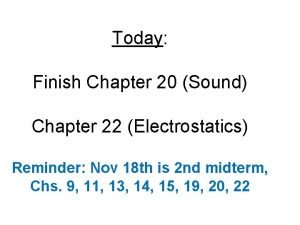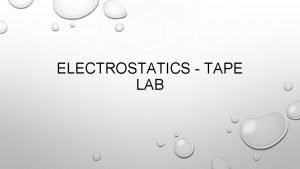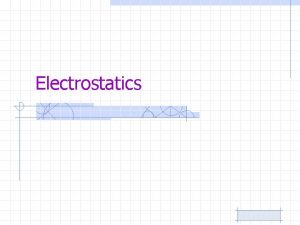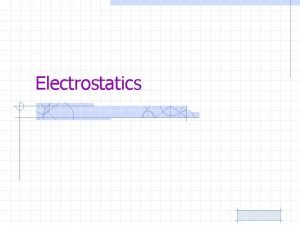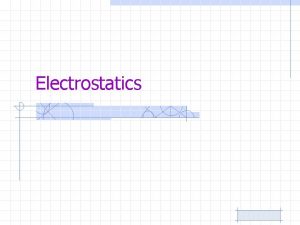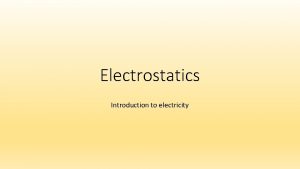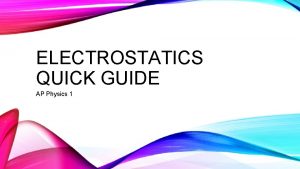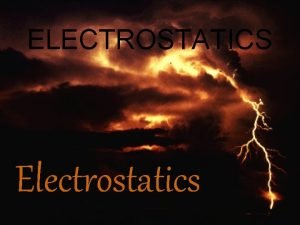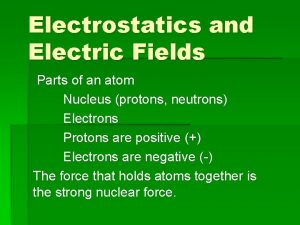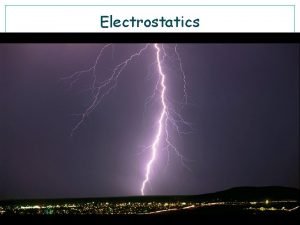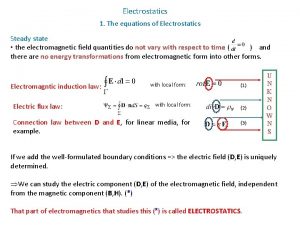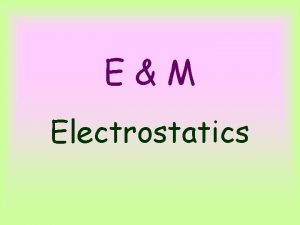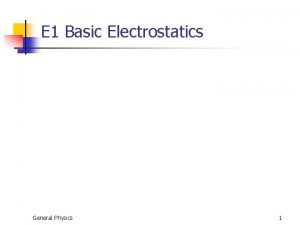Electrostatics are the charged parts of an atom





















- Slides: 21

Electrostatics

____ are the charged parts of an atom. a. Only electrons b. Only protons c. Neutrons only d. Electrons and neutrons e. Electrons and protons f. Protons and neutrons

TRUE or FALSE: An object that is positively charged contains all protons and no electrons.

TRUE or FALSE: An object that is negatively charged could contain only electrons with no accompanying protons.

True or False: Since the proton is much more massive than the mass of an electron, the magnitude of its charge is also significantly greater.

Identify the following particles as being charged or uncharged. If charged, indicate whether they are charged positively or negatively. (n = neutron, p = proton, e = electron)

Consider the graphic below of a neutral oxygen atom. a. Explain what must happen in order for the oxygen atom to become negatively charged. b. Explain what must happen in order for the oxygen atom to become positively charged.

Determine the quantity and type of charge on an object 12 that has 3. 62 x 10 more protons than electrons. • Answer: +5. 8 x 10 -7 Coulombs • To determine the charge on an object, determine the number of excess protons or excess electrons. Multiply the excess by the charge of an electron or the charge of a proton - 1. 6 x 10 -19 C. Finally, adjust the sign of the object to + or -.

A very small sample of an object has 8. 25749 x 1017 protons and 5. 26 x 1014 electrons; the charge on this object is ____ Coulombs. • 0. 132 C

A very small sample of an object has 3. 12 x 1014 protons and 4. 5488 x 1016 electrons; the charge on this object is ____ Coulombs. • 0. 00723 C (7. 23 x 10 -3 C)

A very small sample of an 19 object has 2. 40277 x 10 protons and 9. 88 x 1016 electrons; the charge on this object is ____ Coulombs. • 3. 83 C

A very small sample of an object has 2. 6325 x 1015 protons and 2. 6325 x 1015 electrons; the charge on this object is ____ Coulombs. • 0 Coulombs

The amount of charge carried by a lightning bolt is estimated at 10 Coulombs. What quantity of excess electrons is carried by the lightning bolt? 6. 25 x 19 10 electrons

Respond to the following student statement: "A positively charged object is an object that has an excess of positive electrons. "

Electrical forces can cause objects to ____. a. b. c. d. only attract each other only repel each other attract or repel each other have no effect on objects

• A is either + or neutral; C is -

A is + and C is +

Upon entering the room, you observe two balloons suspended from the ceiling. You notice that instead of hanging straight down vertically, the balloons seems to be repelling each other. You can conclusively say. . . a. both balloons have a negative charge. b. both balloons have a positive charge. c. one balloon is charge positively and the other negatively. d. both balloons are charged with the same type of charge.

The q in Coulomb’s Law equation stands for the ____. A. ) mass of a charged object B. ) the current of a charged object C. ) the charge of an object D. ) the distance between the charged objects

A person scuffs their feet as they walk across the carpet. Their shoes develop a charge of -9. 6 μC. What is the charge on the carpet?

Two identical conducting spheres are placed with their centers 50 cm apart. One sphere has a charge of 24 x 10 -10 C and the other has a charge of -2 x 10 -10 C. If a conducting wire connected them, what would be the charge on each sphere once equilibrium occurs. 11 x 10 -10 C
 Mikael ferm
Mikael ferm Positively charged atom
Positively charged atom Positively charged atom
Positively charged atom Kelemahan teori atom rutherford
Kelemahan teori atom rutherford The structure of the atom section 2 defining the atom
The structure of the atom section 2 defining the atom Electrostatics
Electrostatics Electrostatics
Electrostatics Method of inversion electrostatics
Method of inversion electrostatics Induction vs conduction
Induction vs conduction How to use coulomb's law
How to use coulomb's law Conceptual physics chapter 22 electrostatics
Conceptual physics chapter 22 electrostatics Derive equation of continuity
Derive equation of continuity Facts about electrostatics
Facts about electrostatics Electricity at rest
Electricity at rest Type of charging processes
Type of charging processes Electrostatics is
Electrostatics is Law of electrostatics
Law of electrostatics Electrostatics
Electrostatics Physics classroom electrostatics
Physics classroom electrostatics Chapter 32 electrostatics conceptual physics
Chapter 32 electrostatics conceptual physics Chapter 22 electrostatics
Chapter 22 electrostatics Electrostatics sticky tape lab answers
Electrostatics sticky tape lab answers

